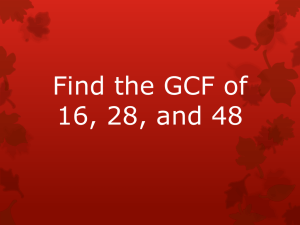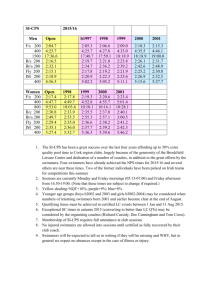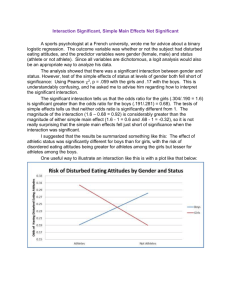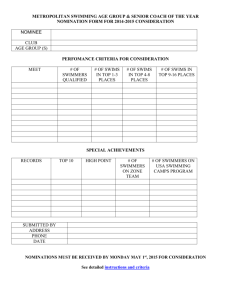coaching philosophy
advertisement
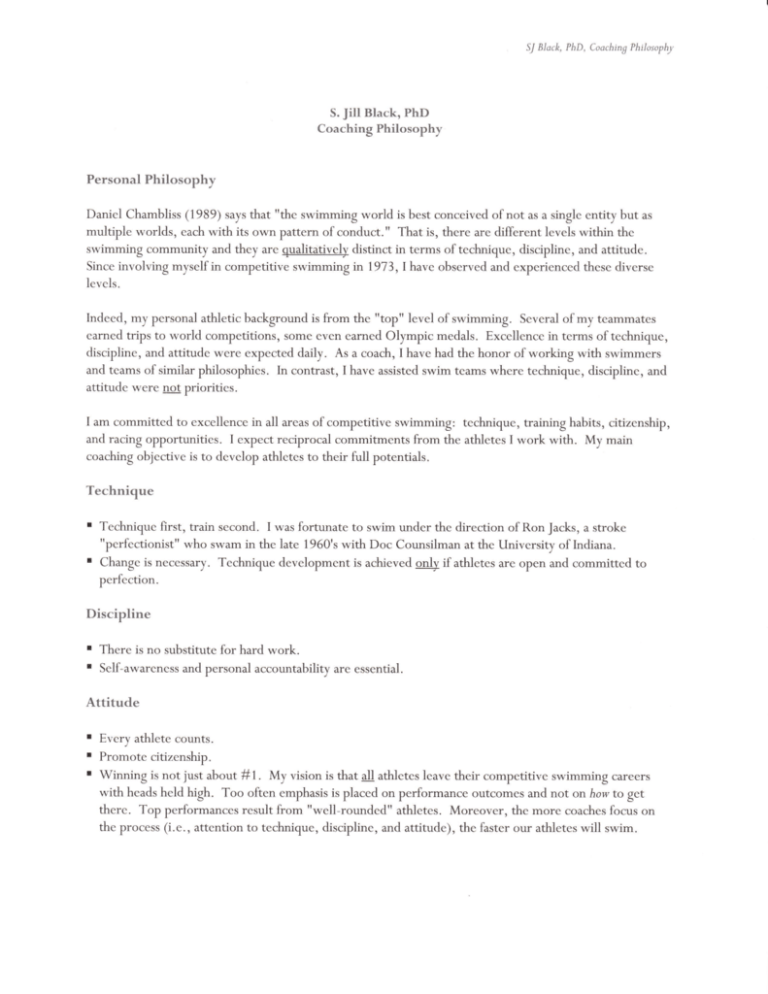
SJ Black, PhD, Coaching Philosophl .:J;lXHliH., Personal Philosophy Daniel Chambliss (1989) says that "the swimming world is best conceived of not as a single entity but as multiple worlds, each with its own pattern of conduct. " That is, there are different levels within the swimming community and they are qualitatively distinct in terms of technique, discipline, and attitude. Since involving myself in competitive swimming in 1973,1have observed and experienced these diverse levels. Indeed, my personal athletic background is from the "top" level of swimming. Several of my teammates earned trips to lvorld competitions, some even earned Olympic medals. Excellence in tcrms of technique, discipline, and attitude were expected daily. As a coach, I have had the honor of working with swimmers and teams of similar philosophics. In contrast, I have assisted swim tcams where technique, discipline , and attitude were not priorities. I am committed to excellence in all areas of competitive swimming: te chnique, training habits, citizenship, and racing opportunities. I expect reciprocal commitments from the athletes I work with. My main coaching objective is to develop athletes to their full potentials. Technique Technique first, train second. I was fortunate to swim under the direction of Ron Jacks, a stroke "perfectionist" who swam in t}e late 1960's wit} Doc Counsilman at the University of Indiana. Change is necessary. Technique developmcnt is achieved only if athletes are open and committed to perfection. Discipline I There is no substitute for hard work. I Self-awareness and personal accountability are essential. Attitude I Every athlete coults. I Promote citizenship. 1 . My vision is that all athletcs leave their competitive swimming careers with heads held high. Too often emphasis is placed on performance outcomes and not on how to get there. Top performances result from "well-rounded" athletes. Moreover, the more coaches focus on the process (i.e., attention to technique, discipline, and attitude), the faster our athletes will swim. t Winning is not just about # SJ Black, PhD, Coaching Philosophl Training Considerations Dailv training plans should consider the ratio of technique instruction to training, sensitive periods of devclopmcnt, and long term awareness. I design my yearly and weekly plans with the following considerations in mind. Technique Instruction vs. Training Emphasis on technique instruction varies by age and compctitive swimming experience (i.c., developmental factors). The table below highlights the ratio of technique instruction to training for differing age-groups. This information n'as derived from Pat Hogan (2003) and Bill Sweetenham (2006). technique/training age 8+1 10+2 12 lgrrls) + I & 13 lboys; + 1++2 90/ I 10 practices,/week yards,/week 2-6,000 1 2,000 3 80/ 20-70/ 30 T 60/+0-50/ 50 +-6 12-20,000 +o/60-20/80 6- 10 20-50,000 5- Sensitive Periods Rcsearch by Sokolovas and Herr (2002) reveals the optimal age ranges, or scnsitive periods, to dcvelop certain physical competencies. For example, girls can best maximize flexibility at ages 6-12 and boys at ages 7- 1 3. Balancc is best maximized at ages B- 10 for girls, 9- 1 1 for boys. Agility is best maximized at ages 9- 1 1 for girls and 10 12 for boys. Endurance is best maximizcd at ages boys. Strength is best maximized at ages 13-15 for girls and 14-16 for boys. 1 1,1 3 for girls and 12-14 for Sensitive pcriods suggest the following training stages: developmcnt of aerobic capacity should be emphasized when girls are 11-12 ycars and boys are 12-13 years. Aerobic,/anaerobic capacity should be emphasized when girls arc 1.2-13 years and boys are 13- 14 years. Anaerobic capacity should be emphasizcd u'hcn girls are 13- 14 years and boys are 14- 1 5 years, Finally, strength and power should be emphasized rvhen girls are 14-15 years and boys are 15-16 years. Long-Term Approach About half the number of US swimmcrs ranked in the Top 100 at age 17, 18 years were "new" swimmers, not previously ranked in the Top 100 at any age (Sokolovas, 2002). Thercfore, most of our future elite swimmers do not rank in the Top 100 until ages 15-16 years. Elite-level swimmers change their events during their careers until the age of 13-14 for girls and 15-16 for boys. In other words, early specialization may limit success. According to Sokolovas and Herr (2002), age at peak performance depends on gender, slvimming event, and rate of individual maturation. Women's top times typically occur at younger ages than men's top times (i.e.,2-4 years). Additionally, peak times for distance swimmers tend to occur at yolrnger ages. SJ Black, ?hD, Coaching Philasophy References Chambliss, D. F. (1989). Th" mundanity of excellence: An etlmographic report on stratification and olvmpic swimmers. Sociolosical Theorv. Vol. 7: 70-86. Hogan. P. (2002). Profile of success: Understandins the success of Mecklenburs Aauatics Club. Reoort presented at the Mini Expo Oregon Swimming Conference, Lincoln City, Oregon. ! Sokolovas, G. (2002). Participation of elite swimmers: From USA swimming's all-time top 100 times. Vol. 8: 1-5. Coaches Quarterly. Sokolovas, G. & Herr, L. (2002). Long term traininginswimming. CoachesQuarterly, Vol.8: 15 Sweetenham, B. (2006). Break Point Volume. American Swimminq Maqazine, Vol. 2006. Issue 19. 2,1+ 36.




